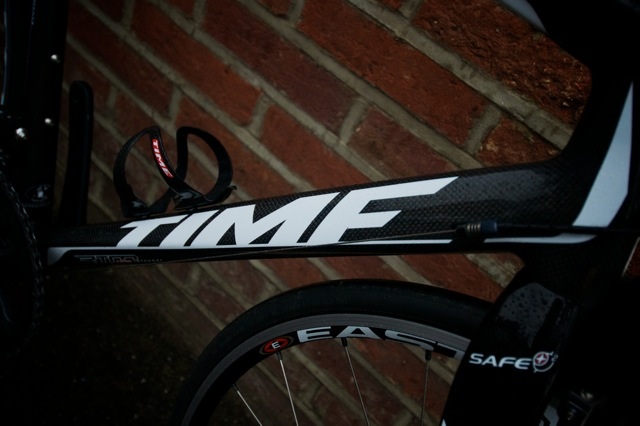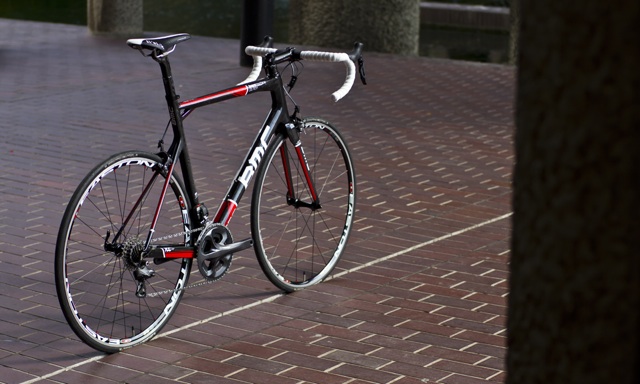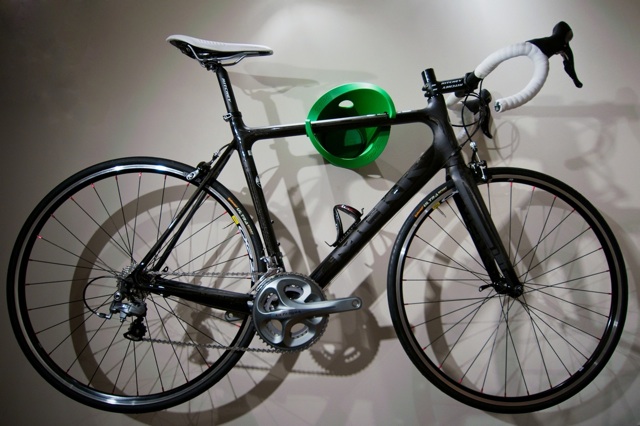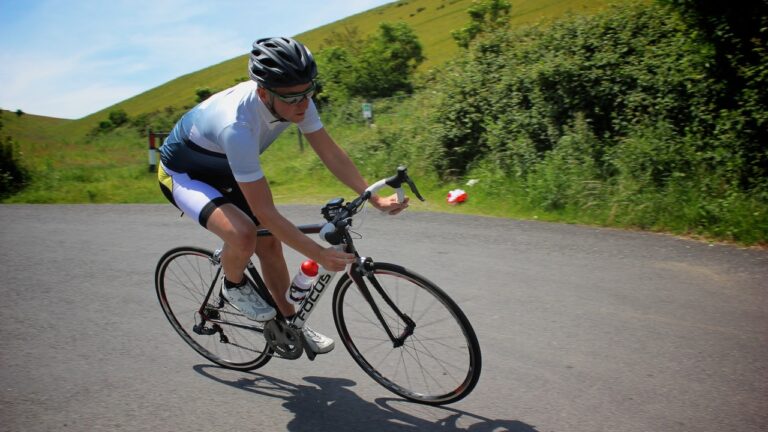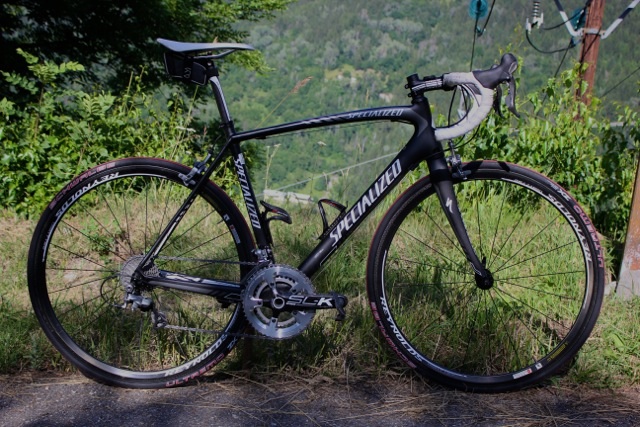We ordered in the Lapierre Xelius 400 as part of our Tour-inspired July test fleet of French machinery (see also the LOOK 695).
The Xelius 400, resplendent in FDJ livery (the French WorldTour team ride a special, team issue model, whose 2012 iteration retails at £5799.99) is a head turner, but how did it ride?
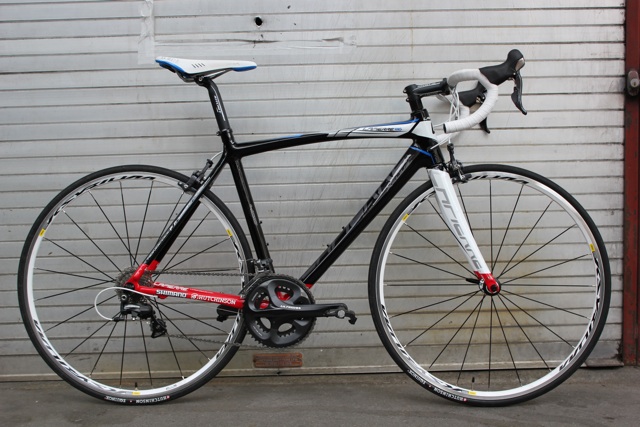
We made a close inspection of the tube profiles and angles in our first look and deduced that the broadening of top and down tubes at their junction with the head tube would provide stiff front end. We weren’t wrong. The stiffness of the head tube was most apparent on London’s appalling road surfaces (ironically those used in the Olympic road race) but on better maintained highways (those in the countryside, a further irony), the Xelius 400 rolled along without causing discomfort. The tallness of the headtube, another feature identified in our first look, provided an upright position easy on the back and neck, although perhaps with less inclination to aero efficiency than we’d expect from a frame marketed as ‘designed for speed’.
Our slight concerns surrounding the bottom bracket (slimmer than some of its oversized contemporaries, external rather than press fit) happily proved unfounded. It was more than able to withstand the watts we were able to put through it, and while Hutarovich and his FDJ-Big Mat colleagues would certainly provide a sterner test than we were able to, we’re confident it would withstand the output of most riders without unnecessary flex.
The external bottom bracket looks dated in comparison with press fit units, but this style retains admirers for its ease of maintenance (unscrew, discard, and replace, no more than a single, splined spanner required) so file our observations under ‘preference’ rather than ‘criticism’.
The 41cm chainstays provided sufficient acceleration, but this wasn’t a machine that leapt forward in response to the slightest input from the pedals, despite the marketing pledge. This isn’t to condemn it as a slouch, but in comparison to the lighter (the Xelius 400 tipped our scales at 7.82kg), and admittedly far more expensive machinery we’ve tested recently, we weren’t overwhelmed.
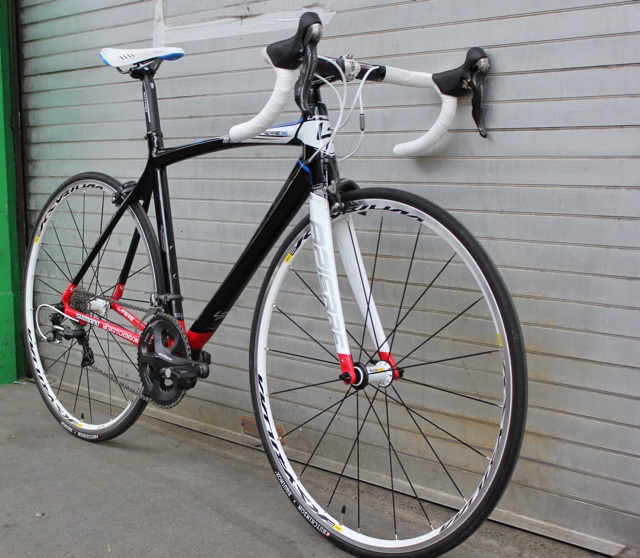
Climbing was good. We took the Xelius 400 along a rolling route of almost constant undulations, with short, steep inclines ranging from six to 17 per cent, and noted its willing response on almost any gradient, from out of the saddle sprints using momentum from the previous descent to seated grovels up longer and steeper tests.
It proved adept on descents, too, holding steady at speeds north of 35mph on straight downhill runs, and confidently negotiating corners at speed.
The full Shimano Ultegra groupset supplied with this model provided its usual level of reliability and precision, the brakes saving our life at least once in London traffic and allowing us to play the considerate road user in the country when exiting a blind bend into what appeared to be rehearsals for the Horse of the Year Show.
It would be unfair to criticise Lapierre for spec-ing Mavic Ksyrium Equipes, a popular choice among manufacturers at this price point (the Scott CR1 Pro, Cannondale’s SuperSix 3 Ultegra), and the gateway to a range of clinchers from a highly-respected wheel builder, but if you’re looking to extract a greater degree of speed from a frame with a claimed weight of 860g, then these might be the first item to upgrade. Mavic claim a weight of 1,690 grams for a set of Ksyrium Equipes, and wrapped in Hutchinson Equinox rubber, and equipped with an 11-28 Ultegra cassette, we recorded a combined weight of 2860 grams (1560 grams at the rear, 1300 grams at the front). Additionally, the pick up in the rear hub was far from immediate.
The Hutchinson Equinox slick tyres rolled freely enough on dry roads, but provided little traction on stiff climbs where the surface remained wet beneath overhanging trees.
Conclusion
At a penny under £2,850, the Xelius 400 occupies a slot in the market place among machines sufficiently refined and well-equipped to handle racing duties (Trek’s 4.9 Madone, the Focus Cayo Evo 2, for example). The Lapierre did everything well, while failing to leave us open-mouthed in admiration in any single area of performance. That said, it was also free of nasty surprises; a competent, confident all-rounder, then, rather than a racing thoroughbred.


